Australian Tropical Rainforest Plants - Online edition
Terminalia arenicola Byrnes

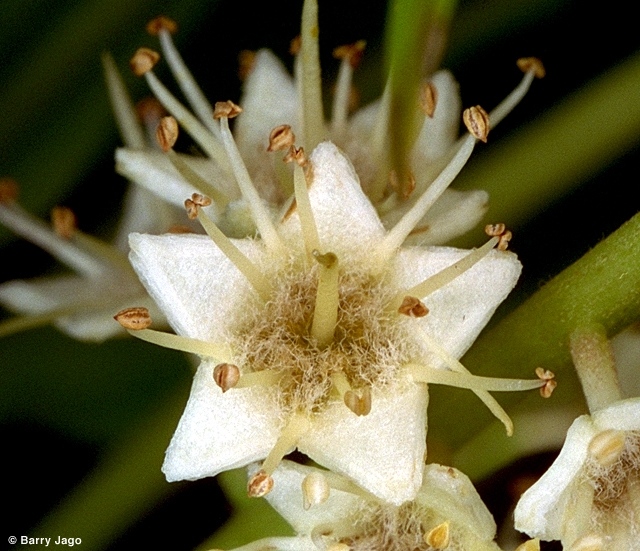
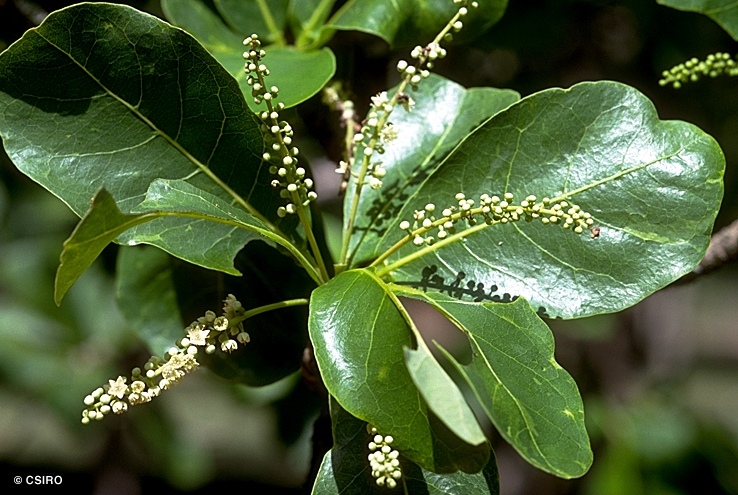
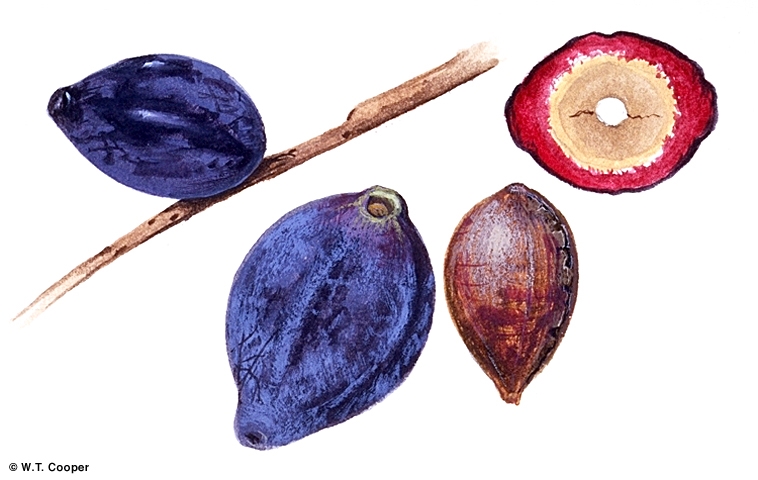
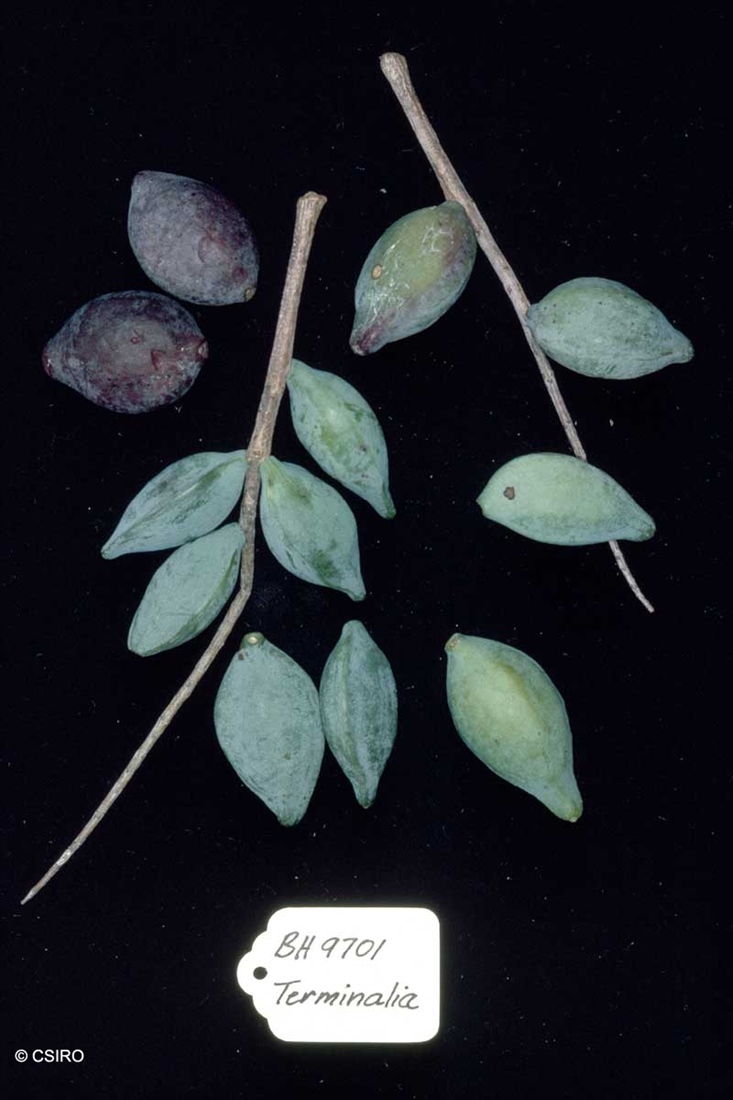
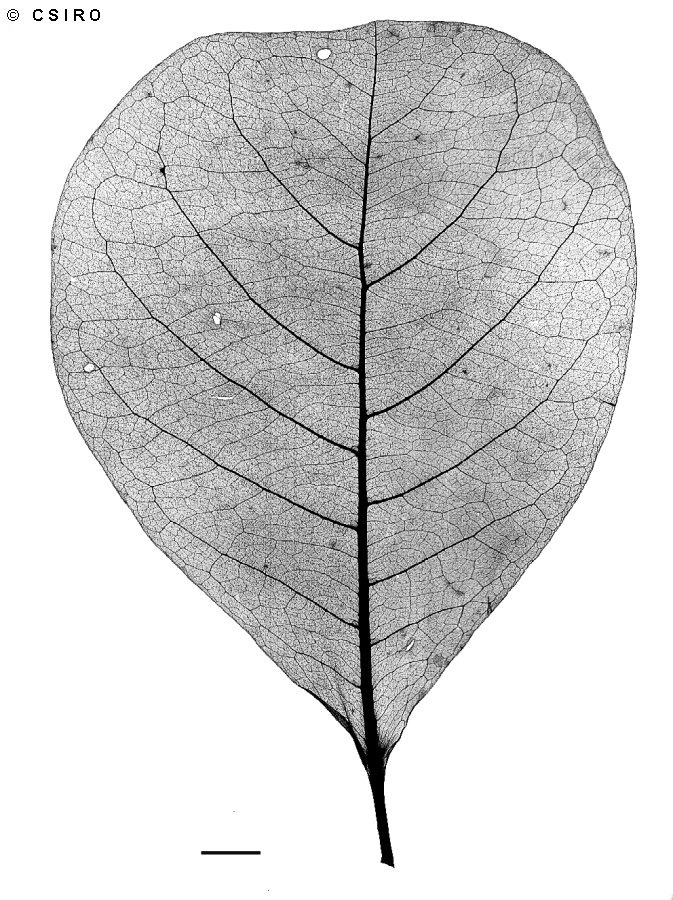


Brown Damson
May be deciduous; leafless for a period in September or October.
Cotyledons much wider than long, about 20 x 35-40 mm, rounded at the base, apex +/- truncate, upper surface with a few hairs towards the base. At the tenth leaf stage: leaves obovate, apex acute or shortly acuminate, base attenuate, hairy on the upper surface; oil dots small, numerous, visible with a lens; petiole, stem and terminal bud densely clothed in long reddish brown hairs. Seed germination time 73 to 165 days.
Endemic to Queensland, occurs in CYP, NEQ and CEQ. Natural distribution now difficult to discern because of cultivation. Grows in beach forest close to sea level. Commonly cultivated on beaches in NEQ as it provides very good shade. Unfortunately the flowers produce a fetid odour which most people find unpleasant. This species has many of the characteristics of T. catappa which is a widespread strand tree and it is surprising that T. arenicola does not have a similar distribution.





